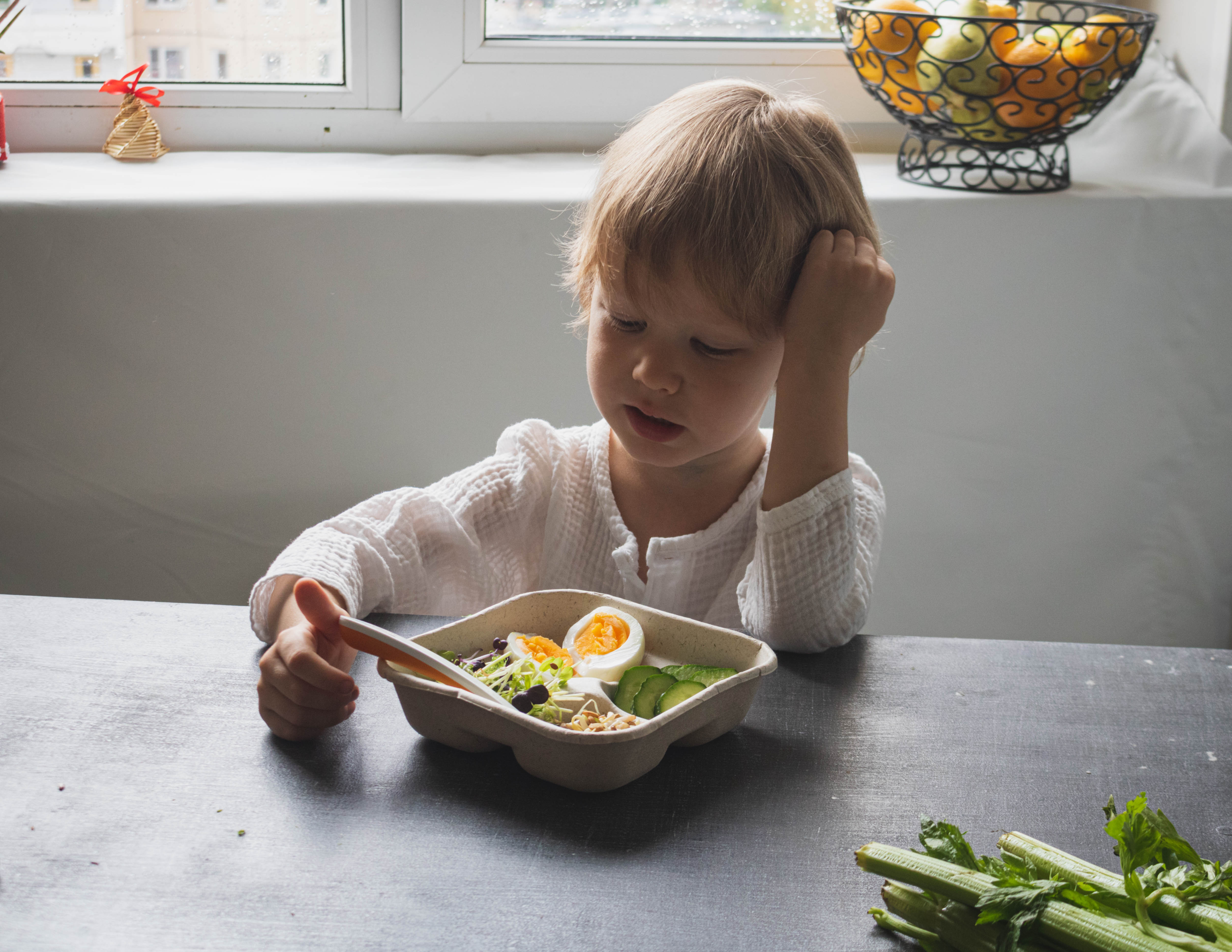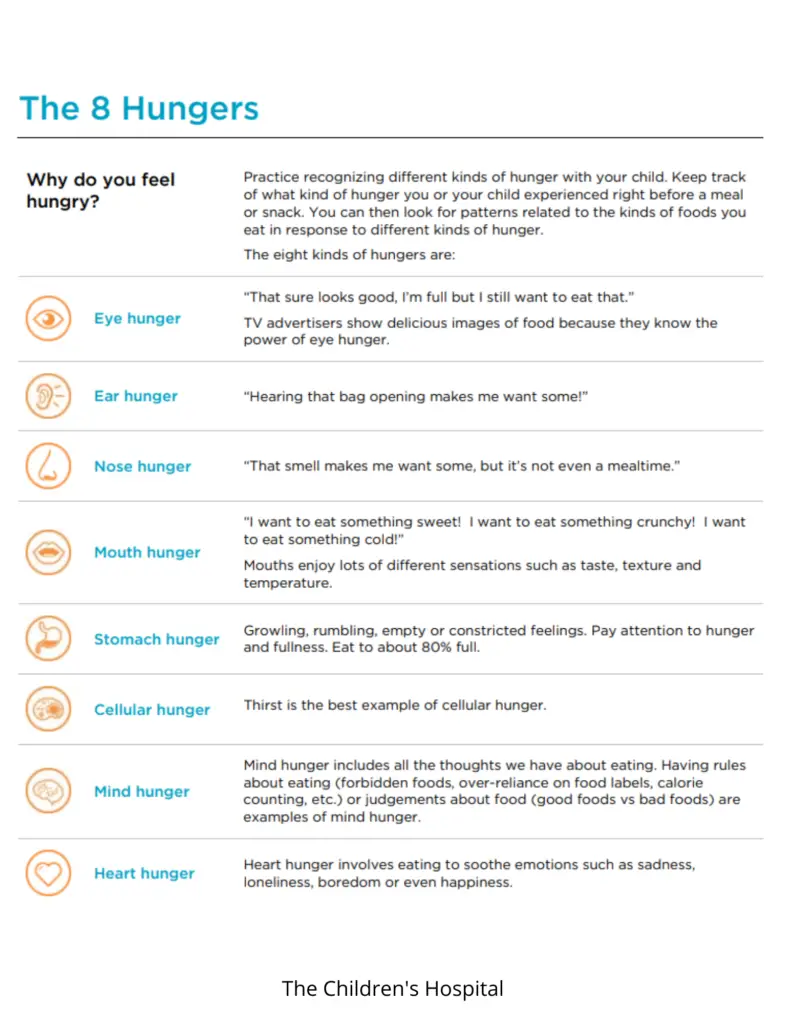There are many reasons kids waste food, and it is so frustrating when they do. Understand that you are not alone, and many parents struggle with food waste. There are many ways to deal with excessive food waste and different ways to deal with wastage.
Children waste food because of poor planning, over-preparation, and curiosity. They are unaware of the steps it takes and are practicing. Educate your kids so they learn to value food and food preparation.
This post will discuss the different methods used to teach many about food and ways to strategically plan food items, prepare, and avoid too much food wastage. Teach children about hunger, farms, composting, and portion control, so they understand behaviors and ways to eliminate waste.

What is Food Waste?
This article may contain affiliate links.
According to this site specifically about environmental waste, food waste is common in grocery stores and during the eating phase. Food waste is the leftover product that originated from the initial food supply chain. It is typically consumable, but consumers have decided not to eat or reuse the food product. So, think of your local market throwing away a fruit crate or your daughter declining a banana. It sounds all too familiar, right?
What is the Average Food Waste Per Household?
Researchers Yang Yu and Edward C. Jaenicke have found that the estimated food waste per household is about one-third through new data compiling. According to their study, the average U.S. home wastes 31.9% of household food purchased with the intent to eat.
Reasons Children Waste Food
Some of the reasons that children waste food are listed below:
- Poor planning
- Curiosity
- Over-preparation
- Preferences
- Fullness
- Body Autonomy
- They don’t understand mental hunger
Poor Planning
Poor planning of family meals is a cause of children wasting food. Stressed parents overbuy some food items and not enough of others. Families stuck with a disproportionate amount of food because they never made a list or food plan will experience food waste. Children want to try everything and want to feel responsible for food choices. If meals do not get planned regularly, children will try to create and prepare meals with what they have without understanding the proper steps.
Curiosity
Curiosity is a likely cause of food waste. Kids who experiment with food to stay involved and motivated to learn more about their health will probably wonder how particular foods taste combined.
Let’s say they created a food dish because they dreamed of how butter and chickpeas taste together. Once they encounter an issue with the idea –How do I combine butter and chickpeas?– they might add a tortilla to the mix. After children experiment with their ideas, they will find that some work and some do not, resulting in food waste. In this case, it’s a buttered tortilla with chickpeas on top.
Over-preparation
Over preparation of certain meals will cause food waste. Have you ever made two pounds of pasta on accident? It is a pretty common problem, and I often see people talk about it. Pasta, in particular, is an easy target; it is convenient, cheap, and easy to pour. Other foods are simply easy to over-prepare and lead to food waste.
Preferences
Children may dislike the food. People consider food’s taste, texture, color, and ease when they eat to determine whether it is preferred. When kids waste food, it is often due to their ability to decide whether they appreciate the qualities of the food. Some kids like the crunchy snap of a carrot and its bright orange color, while others prefer the juicy green cucumber. Dislikes are temporary due to things like teething and moods. Prepare for this when you process your child’s food preferences.
Fullness
Fullness can determine your child’s tendency to waste food. They might feel full but continue to eat because they cannot communicate. They might have eaten before you prepared a meal or before a holiday party and continue to eat because it is socially acceptable.
Autonomy
Control will undoubtedly change your child’s eating habits. If children feel attacked or misunderstood, they will consider different ways to control their bodies. Eating is primal, and when children want to assert themselves, they will do it with food, regardless of whether it gets eaten.
Children Don’t Understand the Different Types of Hunger
There are 8 different types of hunger, according to this hospital’s website. When my kids were struggling with this, my pediatrician encouraged teaching them about the different types of hunger to help them identify the problem, so they learn not to rely on eating because of boredom or because of an exciting sound.
What are the 8 different types of hunger?
There are eight different types of hunger to note when you are managing tiny humans that waste food. It is helpful to know and understand what determines their eating habits. Start with a conversation about one to see if there is some other reason your child wants to eat. This chart was adapted from this website.

How to Talk to Your Kids About Food Waste
Try these steps when talking to your kids about food waste.
- Request help with the meal list
- Ask whether they should reconsider their lunch choices
- Try a challenge!
- Help them evaluate their time
- Ms. Valerie Frizzle
- Go to a Farmer’s Market
- Go to a farm
Request Help With the Meal List
Children like to help sometimes! If they are interested in being a part of the food planning, you should let them. Don’t force them to be part of it, but if they are interested in requesting foods from the store, listen to their requests. Remind them of previous trips and recommend foods they asked for that you did not purchase. Kids feel good when you remember previous requests and learn to value communication when you hold up your end of the bargain. Think of all the times you have said, “Next time.”
Ask Whether They Should Reconsider Their Lunch Choices
There are times when people get stuck in ruts and feel safe with certain things. After some time, the secure feeling of a familiar food item wears off; people are stuck with boring food. I can’t count how many grilled cheese sandwiches I have made since March 2020.

When your kids are unsatisfied with their food, they will likely waste it. Gently encourage them to try new foods. Help them understand that sometimes people want to eat food that feels good because our brain likes to feel safe. Not eating it is a sign they should reconsider their food choices.
Try a Challenge!
Your family might be into a food waste challenge. If they are, consider trying something that involves the whole family. This website has a food waste challenge that is 6 weeks long! You will document food waste, identify goals, and save money! BBC recommends a week-long challenge involving proper food storage, smart shopping, and eating leftovers.
Help Them Evaluate Their Time
Kids waste food because they eat slowly and don’t finish; they rush to their next activity, class, or extracurricular. If your kids eat really slowly, they may need help understanding time constraints. They should learn how to read clocks and request more time at school to eat if needed.
They may need to consider their internal clock if they are not hungry during lunchtime at school. Try helping them stay focused on their body and noticing the time they are hungry so they learn to eat at the right time.
Sometimes children lie to make us happy and don’t realize that it impacts their day. If they eat to make other people happy or rush to the next group activity, they might be full or feel too rushed.
Ms. Valerie Frizzle
The Magic School Bus, anyone?! This series has books that explain farms, bees, climate change, food chains, and food waste.
Here is a list of some books I found about the subject.
- Rides Again
- The Climate Challenge
- Inside a Beehive
- Gets Eaten
- Food Chain Frenzy
Go to a Farmer’s Market
When kids get introduced to Farmer’s Markets, it starts a conversation about food. Kids must learn to identify different types of foods for their safety, health, current information, and so they understand where food comes from! When children are given slabs of stuff on a plate, they just don’t get the magic. Start the conversation small –colors, shapes, and textures– to begin talking about types of foods.
Talking to different people helps them learn to value food because they learn that it is something that should be respected, appreciated, and understood. After all, it is operated by people. And sure, kids will be kids. It is not about forcing them to be into it; it is about the baby steps that introduce them to foreign concepts so they eventually understand why you keep saying, “Finish your carrots!”
Go to a Farm
When you have gone to Farmer’s Market a few times, consider going to a real farm! There are so many times of the year that farms are fun. Springtime brings in tulips and daffodils; fall has pumpkins and corn! If you go to markets frequently, your children will see the beets coming from the ground instead of the farm stand; there are fields of squash! It is fun too. Farms during the peak seasons have games, activities, and fun picture-taking booths.
How to Stop Your Child from Wasting Food
This section may contain affiliate links.
Here are some things to remember when your child wastes food:
- Relax
- Talk about food
- Explore food products in small quantities
- Teach portion control
- Plan family meals
- Limit pre-meal snacks
- Strategic food planning
- Introduce composting
- Get creative
There are ways to reduce food waste at home without getting too crazy or controlling. The last thing parents want to hear is that food waste is the end of life itself and that it’s our fault for not knowing how to manage it.

Relax
Please remember that people learn and grow constantly. It is not your fault, and you should not feel bad when your child wastes food. Kids waste food. Adults waste food. Communities evolve and process new ways to solve problems together. People are always learning new ways to reduce food waste and recycle packaging. The more relaxed you feel about the process, the more likely you will allow your child to explore new and efficient ways to prepare and eat foods and manage their waste as they consider the problems humans face.

Talk About Food
Teach and educate your child by involving them in the learning process. Learn about food together and enroll them in classes that talk about food, so they learn to value the craft and their health. Consider alternatives to punishments and direct your attention to ways to connect with your child instead of ways to fight. Ask questions; stay curious. Make it fun and simple, so kids focus on valuing food and not feeling bad because they waste it.

Explore Food Products in Small Quantities
Allow children to try new foods in smaller portions, just in case they don’t like it or change their minds. Cut up small pieces of fruit, or get smaller packaging. Of course, convenience packaging is more expensive. It would be best if you decided how to manage it, though. Maybe by getting a mixture of the two –convenience and whole– or cutting and portioning whole foods more often.

Teach Portion Control
Try smaller bowls and kid-sized cutlery so they don’t feel pressured to get an adult portion—model healthy eating habits by giving yourself smaller amounts and only eating when you are hungry. Sit down to eat; don’t stand to eat a meal, to teach your family to be mindful of the portion. Get the proper ladle or slotted spoon to provide a way to measure quantities of side dishes or main meals.

Plan Family Meals
Make a simple meal plan that will provide new opportunities to cook and prepare foods together. Consider easy-to-make options for your kids, like hummus and vegetable snack tray or taco night, so your kids can stay involved in the creation.
Try not to over-prepare family meals if you notice tons of food waste. Designate a time to sit down and talk with your family about the next week’s meals and patterns you see to help them identify why they waste. If pasta night gets wasted often, switch it up and try something like chicken and rice instead. Keep your family informed so they know you are trying something new and so they value communication.

Limit Pre-meal Snacks
This is a tough one, I know! Just keep trying to limit snacks right before dinner. Give them one piece of something you are preparing and inform them of a time limit. This bell pepper means 20 minutes until dinner and nothing else after the pepper.

Strategic Food Planning
Pack correct lunchbox sizes, and remember to use icepacks or thermos to keep it at the right temperature. Let children decide what they want to eat during trips, vacations, and school. Use FIFO (first in, first out) to ensure that older food gets eaten first, and consider bringing older foods in the car if your kids usually eat during car rides quickly.

Introduce Composting
Kids love finding solutions to problems and want responsibilities. Composting is a great way to teach them that small amounts of food can be turned into something else. Some regions support composting, and some do not. Check your local recycling center to check and see. Please read this article on composting to know whether it is a good fit for you!

Consider buying an at-home compost bucket for your sink or a larger outdoor compost container to maintain and use for your garden.
Get Creative
- Search for food awareness activities online.
- Incorporate school projects into your food waste topics to reinforce learning.
- Make fun food shapes and funny food names.
- Outschool has fun classes that teach kids how to create kid-friendly items, and their classes are relatively inexpensive. There are community centers that have family cooking classes too. They often have a community kitchen and easy recipes to make together.
- Consider going to a local farmer’s market and teaching them where food originates from and introducing them to the farmers at the stands who make food available. Sometimes, kids must identify the source, and grocery store chains do not have opportunities for children to put the pieces together.
- Use playful approaches that help your child release tension and anxiety. For example, if your child walks away from the table before finishing food, look confused for a moment, and search for them around the house. If you see them, pass by and keep searching and say, “I really thought you would finish that sandwich.” You must have gone into the closet. When you don’t see them in the closet, say, “I better eat that sandwich then.”
- Try looking into shows that value food and the environment. There are many documentaries about different regions where food is made and ways to reduce waste.
- Books that kids read regularly should be related to food and the environment to reinforce learning these skills. Consider The Magic School Bus or The Francis Series.
- Games like scavenger hunts might be fun if you want to teach them about food items and environmental issues. Pinterest is full of ideas for scavenger hunts!
Conclusion
As you know, food waste is very frustrating. It isn’t easy because kids learn through independence and want to make their own food choices. Keep trying new things and learning different ways to teach them to value food and food preparation to understand food waste better!
Sources
- PE2164 The 8 Hungers (seattlechildrens.org)
- 10 Ways to Get Kids to Waste Less Food | I Value Food
- 7 day no food waste challenge | BBC Earth
- Composting At Home | US EPA
- Definition of food loss and waste | ThinkEatSave (unep.org)
- Estimating Food Waste as Household Production Inefficiency – Yu – 2020 – American Journal of Agricultural Economics – Wiley Online Library
- I Value Food Challenge
- Seattle Children’s (seattlechildrens.org)
